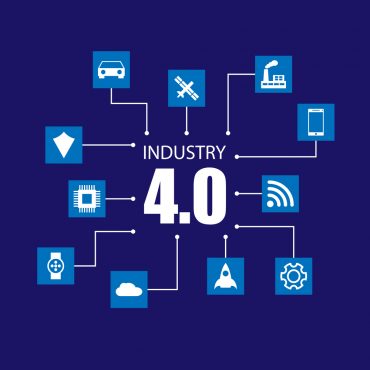
Manufacturers need an industrial connectivity platform that provides a range of features and capabilities for seamless integration and communication within industrial environments.
Industrial connectivity has a long history of enabling automation with point-to-point integrations and protocol translation. With the rise of digital transformation, industrial connectivity is now serving as the foundation for operational technology (OT) data, standardizing connectivity across all machines and assets to fully enable these data-driven use cases.
A closer look at automation enablement
Enterprise connectivity plays a crucial role in enabling industrial automation by providing seamless communication and integration between various components, systems, and processes within a manufacturing environment.
Critical attributes of an enterprise connectivity solution that enable automation and provide the needed data to develop insights include:
Device Connectivity: Industrial connectivity enables seamless connection to devices, sensors, PLCs, and machines with robust protocol translation capabilities.
Machine-to-Machine Communication: Enterprise connectivity allows for real-time data exchange between different devices, machines, and systems involved in industrial processes. This enables timely decision-making and control, leading to improved efficiency and productivity.
Integration of Systems: Industrial automation often involves integrating various systems such as manufacturing execution systems (MES), supervisory control and data acquisition (SCADA) systems, programmable logic controllers (PLCs), and enterprise resource planning (ERP) systems. Enterprise connectivity provides the framework for integrating these disparate systems, enabling seamless communication and coordination.
Centralized Management: Enterprise connectivity allows for centralized management of industrial connectivity systems. This centralized approach enables administrators to monitor, configure, and manage the entire connectivity infrastructure from a single interface, simplifying maintenance and troubleshooting tasks.
Scalability and Flexibility: As industrial automation needs evolve, enterprise connectivity allows for scalability and flexibility. New devices or systems can be easily integrated into the existing infrastructure, and adjustments can be made to accommodate changing requirements without significant disruptions to operations.
Interoperability: Enterprise connectivity promotes interoperability among different equipment and systems from various vendors. This interoperability ensures that components can communicate effectively, regardless of origin, fostering compatibility and reducing integration challenges.
The bottom line is that enterprise connectivity is the backbone of industrial automation, providing the necessary infrastructure for seamless communication, integration, and management of automated processes.
How enterprise connectivity supercharges data-driven operations
Additionally, enterprise connectivity lets manufacturers aggregate data across an entire industrial facility. The capability to collect and bring such data together allows manufacturers to analyze it to develop insights into processes and operations.
Enterprise connectivity facilitates the collection and aggregation of data from various sources, enabling advanced analytics and optimization techniques. This data-driven approach allows businesses to identify trends, optimize processes, and make informed decisions to enhance efficiency, quality, and profitability.
Several common use cases when such data-driven insights are available include:
Performance Management: Identify, analyze, and improve bottlenecks while surfacing critical issues and areas of improvement in operations.
Predictive Maintenance: By collecting data from sensors and equipment, enterprise connectivity enables predictive maintenance algorithms to anticipate potential failures before they occur. This approach reduces unplanned downtime, extends equipment lifespan, and lowers maintenance costs.
Energy Management: Monitoring energy consumption and optimizing usage patterns through enterprise connectivity helps industrial facilities reduce energy costs, comply with regulatory requirements, and minimize their environmental footprint.
Quality Control and Assurance: Integrating quality control systems with production processes enables real-time monitoring and analysis of product quality parameters. Any deviations from predefined standards can be detected promptly, allowing for corrective actions to maintain product quality.
Workforce Optimization: Enterprise connectivity enables workforce management systems to track employee activities, monitor productivity, and allocate resources efficiently. This ensures optimal utilization of labor resources and enhances overall operational efficiency.
Regulatory Compliance and Reporting: Enterprise connectivity facilitates data collection, aggregation, and analysis required for regulatory compliance and reporting purposes. Automated reporting capabilities streamline compliance processes and reduce the administrative burden on staff.
These use cases highlight the diverse ways in which enterprise connectivity can help provide the needed insights to enhance operations within industrial facilities, driving efficiency, competitiveness, and innovation.
Teaming with an industrial connectivity technology partner
Industrial manufacturing environments are quite complex, typically including a mix of legacy and modern equipment and systems. In such environments, connectivity can be quite challenging. And many companies simply do not have the resources or expertise to select and deploy industrial connectivity solutions or develop custom integrations for each device, asset, or sensor.
Increasingly, manufacturers are teaming up with companies that bring the needed technology and deep industry expertise to ensure that their solutions are implemented quickly and efficiently. In many cases, companies turn to PTC and its connectivity solution.
PTC Kepware is a popular industrial connectivity platform that provides a range of features and capabilities for seamless integration and communication within industrial environments. Some key benefits of using PTC Kepware for enterprise connectivity include:
Extensive Protocol Support: PTC Kepware supports more than 300 industrial protocols, including OPC (Open Platform Communications), Modbus, Siemens S7, Allen-Bradley, BACnet, and many others. This broad protocol support ensures compatibility with virtually any asset.
Interoperability: Kepware promotes interoperability by enabling seamless communication between various vendors’ devices, machines, and systems. This interoperability facilitates integration across heterogeneous environments, eliminating silos and promoting data sharing and collaboration.
Scalability: PTC Kepware is highly scalable, allowing organizations to easily expand their connectivity infrastructure as their needs grow. Kepware can scale to meet the requirements of small to large industrial installations, whether connecting a few devices or thousands of endpoints.
Data Aggregation and Optimization: PTC Kepware allows organizations to aggregate data from multiple sources and optimize its utilization for various purposes, such as monitoring, analysis, and control. This data aggregation capability enables organizations to gain valuable insights and make informed decisions to improve efficiency and productivity.
Reliability and Performance: PTC Kepware is known for its reliability and performance, providing robust communication channels that ensure high availability and minimal latency. This reliability is crucial for mission-critical industrial applications where downtime can have significant consequences.
Security: PTC Kepware incorporates advanced security features to protect industrial networks and data from cyber threats. It supports industry-standard security protocols and features such as encryption, authentication, and access control, helping organizations maintain the integrity and confidentiality of their data.
Ease of Configuration and Deployment: Kepware offers intuitive configuration tools and wizards that simplify the setup and deployment of connectivity solutions. Users can quickly configure data sources, define communication parameters, and establish connections without requiring extensive programming skills.
Integration with Other PTC Solutions: As part of the PTC ecosystem, Kepware integrates with other PTC solutions, such as ThingWorx, providing a comprehensive Industrial IoT (IIoT) platform for digital transformation initiatives. This integration enables organizations to leverage data from connected devices for advanced analytics, predictive maintenance, and operational optimization.
Overall, PTC Kepware offers a robust and flexible solution for enterprise connectivity, empowering organizations to unlock the full potential of their industrial assets and drive digital innovation.







